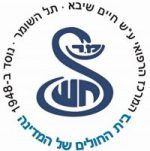Background:Targeting RNA polymerase-1 (POL1) machinery is a new strategy for suppression of multiple sclerosis (MS) relapse activity. Oral administration of POL1 inhibitor RAM-589.555, which is characterized by high permeability and bioavailability in naïve mice, ameliorates proteolipid protein (PLP)-induced experimental autoimmune encephalomyelitis (EAE) by suppressing activated autoreactive lymphocytes. We assessed the accessibility of RAM-589.555 to the central nervous system (CNS) of EAE-mice and further investigated its immunomodulatory effects on CNS-resident astro- and micro-glial cells in-vitro and in-vivo.
Methods:Effects of RAM-589.555 on activated microglia and astrocyte viability, proliferation, and secretion of neurotrophic factors were assessed in-vitro. The pharmacokinetic of RAM-589.555 was evaluated in the blood and central nervous system (CNS) of EAE-affected mice. High-dimensional single-cell mass cytometry was applied to characterize the effect of RAM-589.555 on EAE-affected mice’s CNS-resident micro- and astroglial cells and CNS-infiltrating immune cells, which were obtained seven days after RAM-589.555 administration at EAE onset. Simultaneously, the expression level of pre-rRNA, the POL1 end product, was assessed in blood cells, microglia, and astrocytes to monitor RAM-589.555 effects.
Results:RAM-589.555 demonstrated blood and CNS permeability in EAE mice. In-vitro, incubation with 400 nM of RAM-589.555 significantly reduced viability and proliferation of lipopolysaccharide (LPS)-activated microglia by 70% and 45% (p< 0.05), respectively, while tumor necrosis factor α (TNFα)-activated astrocytes were not affected. The secretion of neurotrophic factors was preserved. Furthermore, 7 days after administration of RAM-589.555 at EAE onset, the level of pre-rRNA transcript in peripheral blood mononuclear cells (PBMC) was decreased by 38.6% (p= 0.02), while levels of pre-rRNA transcript in microglia and astrocytes remained unchanged. The high-dimensional single-cell mass cytometry analysis showed decreased percentages of CNS-resident microglia and astrocytes, diminished pro-inflammatory cytokines (IL-1β, IL-6, IL-12, IL-17, TNFα, and IFNγ), and an increase of their anti-inflammatory cytokines (IL-4, IL-10, and TGFβ) in RAM-589.555-treated compared to vehicle-treated mice (p< 0.05).
Conclusions:These data correlate RAM-589.555-induced clinical amelioration and its CNS-permeability to decreased CNS-inflammation, and decreased micro- and astrogliosis, while restoring micro- and astroglial anti-inflammatory and neuroprotective capacity.






